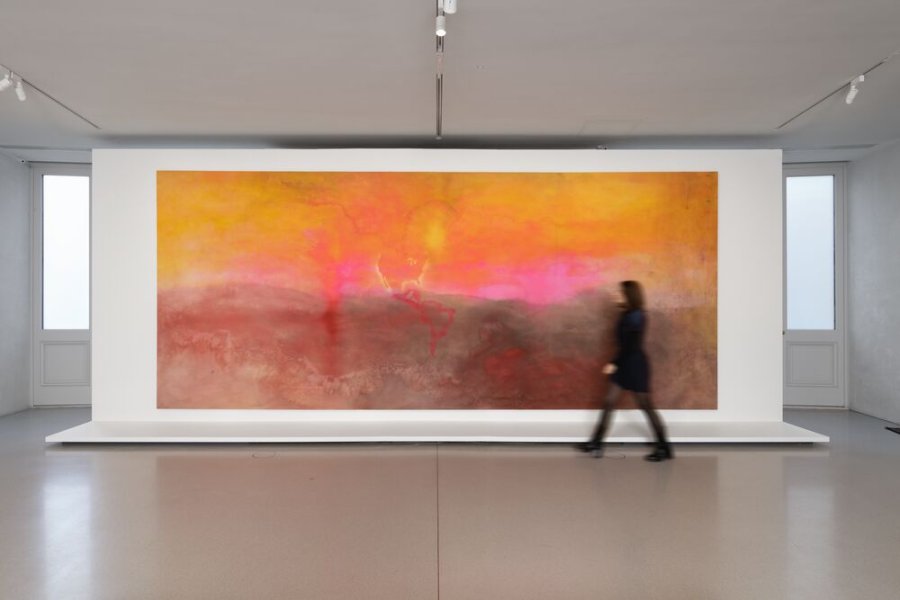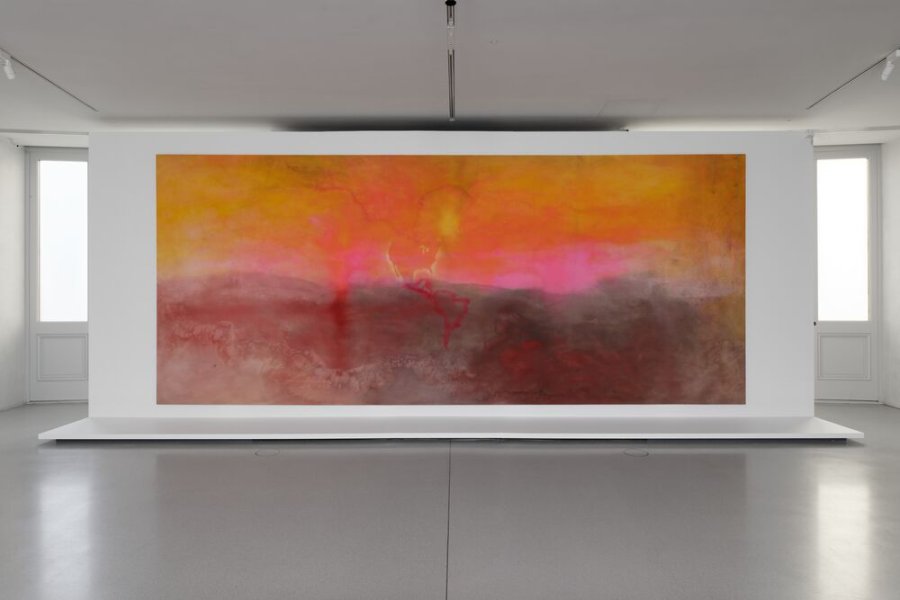Texas Louise
Acrylic on canvas
282 × 665 cm
Painted in 1971 and exhibited that same year at the Whitney Museum in New York City, Texas Louise is a large-scale painting by Frank Bowling from his series Map Paintings (1966–1971), which the artist began upon moving to the US in 1966. It combines abstraction and figurative representation, while preserving a suspended image of a map of the world through the use of large, diffuse colour fields.
In this instance, abstraction is not a neutral or universal language; it reveals
the post-colonial and geopolitical consciousness of these southern territories. Emanating an incandescent pink-red halo, the painting radiates an intense warmth that is vibrant, sublime, and unsettling all at once. A silhouette of the North and South American continents, painted with a spray can and stencils, emerges against the background of the canvas, which instead recalls the lyrical abstraction and colour field painting very much in
fashion at the time.
Like the rest of the series, Texas Louise steps out of the discourse of abstract painting. Two landscapes have been overlaid here: the map of the Americas blends into a dusking horizon, as if one geography were concealing another. The title refers explicitly to the North American state of Texas, but the more visible geography is the connection between Central and South America. Is this a way to reconnect this space, typically associated with a certain image of white America, with its Indian and Mexican heritage? Frank Bowling’s painting is far from a merely formal or emotional exercise in abstraction; it instead asserts a political and personal identity where social commentary is never secondary to the aesthetic impulse.

© Frank Bowling / ADAGP, Paris, 2023. Courtesy Frank Bowling © Tadao Ando Architect & Associates, Niney et Marca Architectes, agence Pierre-Antoine Gatier. Photo : Aurélien Mole. Courtesy Pinault Collection
Vue de l'exposition "Avant l'orage" / Exhibition view "Avant l'orage", Bourse de Commerce - Pinault Collection, 2023

© Frank Bowling / ADAGP, Paris, 2023. Courtesy Frank Bowling © Tadao Ando Architect & Associates, Niney et Marca Architectes, agence Pierre-Antoine Gatier. Photo : Aurélien Mole. Courtesy Pinault Collection
Vue de l'exposition "Avant l'orage" / Exhibition view "Avant l'orage", Bourse de Commerce - Pinault Collection, 2023
